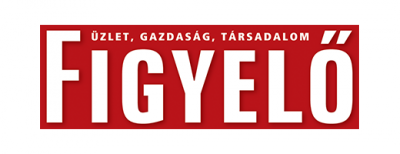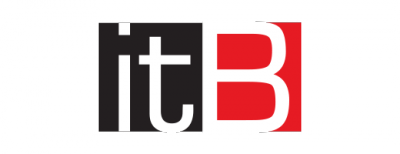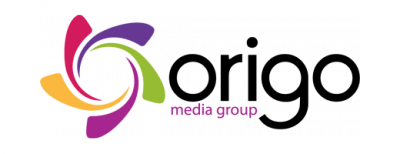Agenda
English-language lectures
All lectures are translated into english. The English-language lectures signed in the program.
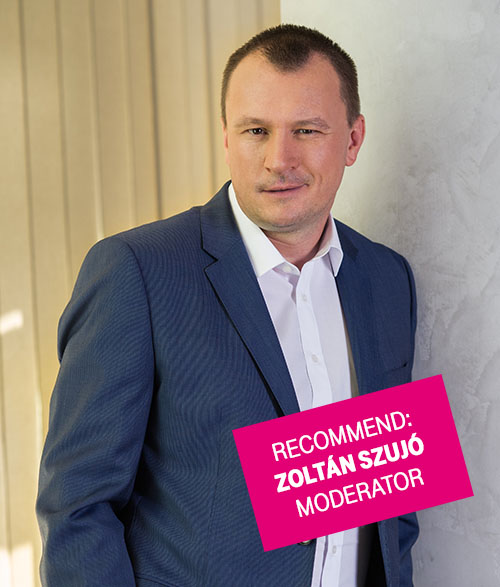 I consider it a privilege that the leading ICT provider, T-Systems Hungary offered me the opportunity to act as moderator of the fourth annual Symposium conference in 2015. I am certain that, as in previous years, the event will address exciting topics.
I consider it a privilege that the leading ICT provider, T-Systems Hungary offered me the opportunity to act as moderator of the fourth annual Symposium conference in 2015. I am certain that, as in previous years, the event will address exciting topics.
The full-day program will start with a plenary session in the morning, consisting of speeches delivered by internationally renowned experts, representatives of the Government and executives of T-Systems Hungary. In the afternoon, experts from T-Systems Hungary and its partner companies will deliver presentations in the framework of 10 breakout sessions, and we shall also address the most influential technological trends of the present and the future.
Please, review the detailed program of the T-Systems Hungary Symposium 2015 event held on November 25, 2015.
Fundamentally new business models surface overnight. These unprecedented approaches knock entire industries off of their beaten track of operation and prompt all corporate executives to re-think their long-term business strategies. What can we do to lead these changes rather than following them? What mindset do we need to really understand the demands of our customers? Beyond companies or institutions, how can larger communities benefit from certain ICT solutions? Why is it important to turn our business digital and how can it really become one?
Systems as diverse as the world wide web, Internet or the cell are described by highly interconnected networks with amazingly complex topology. Recent studies indicate that these networks are the result of self-organizing processes governed by simple but generic laws, resulting in architectural features that makes them much more similar to each other than one would have expected by chance. I will discuss the order characterizing our interconnected world and its implications to network robustness, and control. Indeed, while control theory offers mathematical tools to steer engineered and natural systems towards a desired state, we lack a framework to control complex self-organized systems. I will discuss a recently developed analytical framework to study the controllability of an arbitrary complex directed network, identifying the set of driver nodes whose time-dependent control can guide the system’s dynamics.
The world’s most popular media owner creates no content, the most valuable retailer in the world has no inventory, and the world’s largest taxi company owns no vehicles. Very often it is a single idea and a sexy smartphone app which attracts a billion of customers across all continents and cultures. All these companies have in common that they almost don’t invest, don’t employ people and don’t pay taxes in Europe. But all of them would be worth only a penny without an internet connection. This is what makes European Telco Industry so fundamentally important for all of us. But this industry has a very hard times and only Telecommunication Companies with a truly Pan-European approach will be able to stand the pressure from the global giants.
In this day and age, not only the labor market changes continually, but so do the expectations of potential employees, too.
In order for Magyar Telekom to retain its leading position on the market and even to develop further competitive edge, it is essential that our team should consist of the best qualified experts. For that, we need to create an attractive and dynamic work environment, the workplace of the future.
How will the ideal employee of the future differ from that of today? How will our working methods and work environment renew? What new challenges will managers face, and what will they need to enable their teams to succeed?
That is what I consider a guarantee for our future success, and those are the questions I seek answers to in my role of heading Telekom HR.
In today’s world, a Digital Strategy decides about success or failure of organizations. Nearly 4 of the top 10 incumbents in each industry will be displaced by digital disruption within the next five years. But only 1 in 4 leaders say they are being sufficiently proactive about digitization.
With technology being at the heart of this transformation, IT is moving from the basement to the boardroom for both private and public sector. Every organization is becoming a digital organization first – creating unprecedented economic opportunity for businesses, industries, individuals, cities and countries.
In this Symposium T-Systems Hungary wants to introduce in an unorthodox way some of its projects that well represent professional diversity and the business mission of T-Systems. The audience is invited to play a game and vote for the most exciting project. From the three projects introduced, guests of the Symposium and those who download the T-Systems Symposium application can vote for the Project of the Year. The prize will be awarded during the afternoon by Chief Officer Mihály Németh.
The newly established Hewlett Packard Enterprise integrates the HP enterprise hardware, software and services portfolio. Nevertheless, we are not talking about hardware, software and services. We are talking about areas, which can transform our clients business model, even their daily operations as well.
The security protection of companies, increasing efficiency of workplaces, transformation to hybrid infrastructure (cloud and physical) and business growth driven by assets, are the areas where Hewlett Packard Enterprise lines up employees with outstanding professional knowledge even in Hungary.
Olympic silver- and bronze-medalist, World- and European-champion, ninetyfive-time Hungarian champion swimmer
Dániel Gyurta
Olympic triple time World- and two-time European-champion swimmer
During this year’s Symposium, T-Systems Hungary will present awards in altogether in three categories to its partners that have created higher than usual values in the course of their cooperation with our company. In addition to the partners who have made the highest contribution to our becoming a partner in transformation, the most loyal small and medium-sized collaborators and the companies that have achieved the most rapid increase will be handed over awards by T-Systems Hungary.
As part of this year’s Symposium, T-Systems Hungary would like to adopt a novel approach to presenting some of its projects that demonstrate the professional diversity and the business mission of T-Systems. Members of the audience will be invited to vote and thus decide which project they consider the most exciting. Attendees of the Symposium and those who download the T-Systems Symposium application will be able to vote on which one of the three projects presented should be the Project of the Year. The award will be presented in the afternoon.
The future has started. In the evening T-Systems Hungary will present you the most talented young soloists of Hungary. We will welcome on stage the bright stars of the future as well as a bonafide, world-famous Hungarian star, Erika Miklósa. Our exceptionally gifted, young classical, jazz, opera musicians and ballet artistes will be with us to demonstrate that even art needs innovation. The unforgettable programme will feature the Sir Georg Solti Orchestra and Zoltán Bolyky, leading Conductor of the Debrecen University Orchestra.
The focus point of the presentation will be the current status of transforming public administration into a digitalized service. Within this we will discuss the vision of a truly digitalized public administration, the timeliness of its implementation and the multidisciplinar approach. How can we establish a uniform logical and technical platform and to create a supporting legal environment? The presentation will answer these questions.
Chairman, Associate Professor, Technical University of Budapest, Faculty of Electric Engineering and IT
Future vision of the e-administration through the eyes of IT solution providers Ensuring high quality customer services and customer satisfaction through modernization of the public administration sector. Virtual customer space vision and its integration into regional possibilities. Simplification of the public administration processes through data flow acceleration and full-scope elaboration of processes, process integration. Data supply to serve public administration and customer needs.
We offer options, examples, possible solutions to these questions while knowing that the technology is already available - and it is not only a vision.
Branch Director - Corporate Governance and Customer Management Solutions, T-Systems Hungary
Future vision of the e-administration through the eyes of IT solution providers Ensuring high quality customer services and customer satisfaction through modernization of the public administration sector. Virtual customer space vision and its integration into regional possibilities. Simplification of the public administration processes through data flow acceleration and full-scope elaboration of processes, process integration. Data supply to serve public administration and customer needs.
We offer options, examples, possible solutions to these questions while knowing that the technology is already available - and it is not only a vision.
Branch Director - Corporate Governance and Customer Management Solutions, T-Systems Hungary
IT used to be focused on technology priorities and IT teams became sophisticated technical departments. Now, as priorities are shifting, the sophistication of an average IT division is actually going down—they look for different solutions. We are at Dell committed to making technology simpler, more affordable, and more accessible. In my presentation I will demonstrate how Dell’s unique design philosophy sets us apart from all other technology providers today.
As the saying goes: information and knowledge is power. The background of this idea changed a lot recently. Competitive edge does not come from the quantity of the information but from the exploitation of new values arising from connecting seemingly non-linked data that have been managed in silos so far. The presentation tries to explore this phenomenon. Dou to the complex nature of duties and responsibilities the state manages a huge amount of data. It is an important question how government stakeholders can use this information pool to improve institutional capacities and to establish an effective public administration system.
The presentation gives an overview on the structure of the Government helpdesk (1818) and its high-level technical background while presenting the achievements of the last two years. The presentation we also cover implemented and operating solutions and the developments since the start of the live operation.
Head of Unit - Technology and Infrastructure Development Unit, Central Office for Administrative and Electronic Public Services
During the presentation you will get an idea how F5 ADC can help you to protect your investment into applications and how to decrease operational costs of datacenter infrastructure in same time. F5 is now not only load balancing solution, but comprehensive approach to manage and maintain critical internal and external services.
Cyber security is hard to grab. The same applies to hackers and their motivation. Even so how they hunt down our data and expose our operation. The presentation reveals the cyber security exposures and motivations threatening public administration systems and we will think about what security devices and technologies can protect our data and what legislation they must comply with. Will focus on the “firewall and antivirus” duo that we think is undefeatable and understand the operation of software gadgets with which we currently protect our data from unknown attackers and their sophisticated cyber weapons.
T-Systems Hungary has become a key expert of transportation information technology in Hungary. In recent years the basic IT infrastructure for transportation services has been built completely and now the second phase is launched with the expansion and roll-out of quality community transportation.
The relevant trends and opportunities are presented by the manager of the traffic business unit.
Display of real time departure data on smart devices - passenger information systems in the 21st century.
The presentation for professionals will present the latest public transportation support innovations of T-Systems. The virtual departure (or bus stop) application helps to display real time departure data at the given (bus) stop through QR code reading and smart devices - web based technology placed in the stop while the check-in function offers a mobile e-ticketing solution enabling drivers to read the passenger’s previously printed QR code with a mobile device to validate the passenger’s ticket and seat reservation.
Both services will be presented live at the event.
Traffic jams, lengthy travel time, too busy timetables, high operation costs - everyday annoyances and business problems.
In the meantime public transportation systems and the related IT background systems provide data that - if analytically processed - may provide information to create tools to enhance the traveling experience and to reduce traveling costs. The presentation shows practical examples on the establishment of data-driven transportation solutions.
In Europe cities generate 85% of the GDP as investments - therefore jobs - are concentrated here.
Kecskemét is among the most developing areas in Hungary where thanks to the successful cooperation of its leaders and investors the city offers jobs, security and a predictable future vision not only to its own residents but within the suburbs as well.
In order to keep this growth on a sustainable orbit it is a must to develop the public administration system and align it to the new technical environment.
The system of individual and public transportation is a very important element of public services.
The presentation will deliver detailed information on the Uniform Information System Communication Solution developed and to be implemented in Hungary. We present the two key components of the system, i.e. the electronic recipe and the industry specific service portal as well as the system interface.
Deputy Head of the Competence Centre - Knowledge Management Systems, T-Systems Hungary
László Keszthelyi
Managing Director, Pan-Inform Ltd.
Healthcare data today in Hungary: printed documents with the patients, image files stored on CD, unstructured text files, isolated systems written in different codes and data “stored” in different structures. These are huge challenges and opportunities at the same time. We can utilize them in everyday medical practice and research as well as in institution and branch management. How do we get from technology to results? Big data, business analysis, data science: exploration of healthcare data. The presentation gives an overview on the implementation of a healthcare BI system and future orientation.
How can we harmonize the current report and documentation based healthcare services with the opportunities offered by smart watches, implant sensors and artificial intelligence?
MedSol SMART is an integration platform that serves as a bridge between the current IT processes in hospitals and the technology of the future.
The use of standard EHR data structures and the application of open source technologies and cloud-based operation maintains its value and ensures a value creating investment for healthcare institutions.
The Electronic Health Cooperation Service Space (EESZT) implements information technology and service integration of the Hungarian e-healthcare, this way kick-starting the sector on digital business transformation. Gradually introduced from next year, the EESZT will establish the basis for close cooperation between the information technology systems and professionals of the sector. This nation-wide system will bring a paradigm shift in the Hungarian healthcare information technology: on one hand, the easily extendable and highly available platform is a state-of-the-art private cloud-based solution that provides technical and business services to the players of the sector from the government cloud, whereas on the other hand we implemented it by using a service-oriented (SOA), modular technology built on components which allow fast extension and adaptation to the changing needs. The presentation will describe the concept of the Hungarian e-healthcare and EESZT, infrastructural, architectural and security features of EESZT, and will briefly introduce the impressive starting service kit of EESZT. The audience will also receive information on the planned schedule of national deployment.
Business intelligence and analysis solutions have been self-contained disciplines for years.
Decision support systems have been clearly distinguished from operative systems that are responsible for managing day-to-day operation and only work as sources of data that are necessary to perform analyses or sometimes provide calculated results. We experience that this operation model is changing and now analytics is built into everywhere and becomes part of operative processes. The presentation gives an interesting future insight into this field and presents the role of T-Systems Hungary therein.
The future of individual communities (be them small groups, cities, nations or the entire society) will depend on how effectively they may organize their operation and to what extent they can utilize the opportunities offered by modern technology. Recent achievements of info-communication radically transform our lives. They do not only make it more comfortable but also change our lifestyle, the nature of our activities, motives, methods thereby creating a much more effective and transparent (intelligent - if you like) society.
At what point does an enterprise become digital?
Actually, if it works! The products are services of certain companies are "bites" and the tools necessary for their creation, fowarding and transformation. Nowadays a huge amount of information is accumulated during the day-to-day operation of companies and it seems reasonable to assess the possibility of their secondary level utilization via analysis.
The development of technology offers new approaches in business intelligence. The presentation shows the future vision of SAS on new generation BI, thanks to which companies may create valuable knowledge from bulk data more effectively.
We come across with digitalization more and more frequently in almost every area of our lives, but how much do we know about the notion and what do we do with it? Why do we deal with this now when digital technology and tools have been around for a long time? Although there are several answers to this question it is worth reviewing some basic considerations to understand the links and to define the basis for the solutions. Website, e-bank, remote expert, digital signature, video chat, mobile payment - but are these enough to serve new customer needs? What new players are there in the banking market who may fundamentally transform the current way of operation of banks. The presentation tries to find an answer to these questions.
In a world where Uber, AirBnB and sharing economy are the points of orientation and the basis of thinking. If something is not popular enough then it will sooner or later be provided free of charge therefore traditional banking service providers must rethink their roles, service channels and quality to live up to current expectations. The new generation is not loyal, it gives priority to its own interests and tries to think very consciously. They want to bank simply and effectively and they only want to go to the branch office as a last resort. Do you want to bank or do your administration via chat and Facebook through phones and the internet? Are banks ready for that? Besides technological constraints, we do not how to address them, through which channel they expect our services and can we answer the questions as they want us to? Who are the hyperconnected customers, what expectations do they have towards service providers and banks? We will try to find an answer to these questions during the presentation.
The digital channel’s role is more and more significant in banking. The question arises: how can we use digital channels - which are seemingly impersonal - so that they do not reduce but rather increase customer interactivity. The presentation will feature the Avaya digital customer relation concept and its LiveAssist solution that offers chat, joint browsing, joint form filling and annotation services upon request of the customer and may reduce the administrative burden of branch offices with as much as 60-90% in certain customer segments while improving customer experience by way of swift banking services.
Paperless branch offices will surely have to be managed in this decade as they bridge personal relations based branch office operation and internet-based banking.
With the help of this solution one may implement a customer data based PKI system that introduces exceptional authorization security in the field of electronic signatures and gives access to high-quality sales support solutions.
The sales platforms can be supplemented with advanced, tablet optimized, innovative solutions thereby helping to accelerate branch office administration processes and improve efficiency to provide higher customer experience.
During summer, IPSOS was assigned by T-Systems Magyarország to conduct a poll in cities with over twenty thousand residents. Leaders of 30 cities and Budapest districts were asked about their opinion regarding the importance of the benefits presented by Digital City, what underlying investments had already taken place, what were their development priorities, what were the main obstacles, and what are the areas, where help is needed the most. The findings are clear: successful projects are possible, where the intentions of the clients, the available resources and the market offering meet. Our section follows this topic – the first presentation seeks answer to the classic question: “What does the Client want…?”
Branch Director - Medium Sized Businesses and Public Large companies, T-Systems Hungary
Today T-Systems Magyarország can proudly state that it has become a professional pioneer in the field of Digital City. However, experience shows that this knowledge is viable and can be converted into actual city development projects, if we can consult with the regional stakeholders in a credible way also about the financing issues of these investments. This presentation will overview the known resources of the European Union focusing on the topic of Digital City (TOP, VEKOP, industrial OPs), and will also provide an outlook towards the direct community resources.
This presentation will detail, which “smart” ICT solutions can be used to support the various urban development areas in the light of the Hungarian realities and of the existing needs, and how the main digital urban development areas, such as mobility, e-government, livability, sustainability and safety can be adapted to the already existing solutions. The primary goal of T-Systems is to arm the city leaders with innovative management tools that make decision making faster and more efficient and enable the leaders to find the largest points of saving, so we focus on the City Management Center and the Digital City basic system. The main purpose of the latter is to ensure that city applications developed earlier or later start to “converse” with each other, and that city leaders can obtain information in a uniform way based on them.
Head Horizontal Sales Manager, T-Systems Hungary
Ferenc Kiss
Horizontal Sales Manager, T-Systems Hungary
Urbanisation, new consumer demands and the sustainability efforts of the developed countries pose new challenges both to the infocommunication and the energetics companies. The new expectations of town citizens open new markets that can be conquered by innovative products. Such a product is the Intelligent Public Lighting Pole introduced in November, offering services designed to modernise life in the city.
Deutsche Telekom has been providing M2M and IoT solutions since 2010 in the region to international and local customers with dedicated international organization and competences.
In the presentation I will show DT’s M2M related strategic approach: M2M is of superior importance and offers serious opportunities in the future, as a result „ everything is M2M” for us. I will also present our most important E2E solutions with the help of which companies - depending on their profile - can make their operation transparent, better control their activities, enhance their employees’ efficiency, acquire new revenue sources and increase customer loyalty and customer experience. Naturally, in order to ensure these solutions the relevant platform, communication network and partners are necessary that will all be part of my presentation.
Tasks related to facility management, monitoring machines and equipment, as well as supervision of physical employees are conventionally carried out independently from the systems managed by IT. Strengthening of control over company resources may also help reduce costs, increase the reliability of processes or even the increase of revenues: let’s just think about elementary tasks like monitoring the movements of guard duty or of maintenance personnel, determination of routes for forklifts or high-valued machines within a large site, or optimal capacity utilization of vending machines for beverages or other products. Thanks to mobile data transfer and price reduction of measuring devices we can get a more accurate picture of “expensive” company processes, and what is even more important: by analyzing the data the bases for a more efficient company can be laid down. The standard M2M services introduced during the presentation are built on an infrastructure well known to IT, so they offer the opportunity for the IT specialists and company resource owners to forge an alliance in utilizing the benefits of IoT.
In this presentation we introduce the Internet of Things (IoT) capabilities of T-Systems Magyarország Zrt. through the implemented reference projects. We are going to go through the architectural and process components encompassed by IoT, as components and communication channel controlling and integrating the devices, their interface, as well as the integration of the devices to each other and to the backup systems. We’ll analyze the processes along safety and device management, as processes covering two main areas of shared systems. The projects with the help of which we introduce the IoT capabilities cover the following segments: public administration, transportation, healthcare and logistics.
Deputy Head of the Competence Centre - Knowledge Management Systems, T-Systems Hungary
With the development of telecommunications, now people are able to remotely communicate not only with other people, but with objects as well. Nowadays, we can find devices uploading and downloading data communicating with each other or with us in a much broader circle. With the building of the network of things, new forms of connectivity are coming to the front, and soon our cars will be included into the network of things (IoT). Current business models – including that of the car insurance market – will be radically changed on the basis of the connectivity of the cars and real-time data collected on the drivers. The best-positioned service providers on this market will be the ones having the most data on the cars. During the presentation the data helping the establishment of the new business logic, as well as how it will ensure better customer relations and the creation of personalized products.
Prezi has 60 million users and a total of 190 million publicly searchable presentations – this is currently the world’s largest database of presentations. The presentation will introduce the history of Prezi, the way they have gone so far to get this far. What did the company funded in Hungary need to achieve success also on the world market? What is the role of cloud in this? What kind of challenges and benefits does the cloud represent for the services providers and the users? How far is the ‘tipping point’? Is it still ahead of us, or we have already passed without noticing that we have passed it?
The German government recognized that they can only maintain their leading position if they react on the dynamically and continuously changing market environment therefore they launched the Industrie 4.0 initiative. The objective of the program is to support effective cooperation between manufacturers and stakeholders of the digital economy. The biggest future challenge at Audi, the prominent German car manufacturer and within that, at Audi Hungária, is to operate IT systems amidst the fourth Industrial Revolution, i.e. the “Industry 4.0”. This requires a long-term corporate strategy where the key element is cloud solutions. The presentation will discuss the problems and key issues of the industry including private cloud and cloud integrator considerations. The presentation will show own solutions like first steps towards building “smarts factories”.
Last fall – following SAAS services – Oracle entered also the PAAS (Platform as a Service) area with a significant portfolio. The company has established its cloud vision and portfolio following a conscious business strategy. Oracle foresees the reality of the near future in the co-existence of public cloud and classic modes of operation, i.e. the hybrid cloud solutions. The company has been establishing its platform to ensure that running of the corporate applications is possible without significant improvements or code changes, using uniform monitoring and management tools both in the cloud and in their own data center, and appropriate model can be adjusted to the optimal usage mode at any time. The presentation introduces a few examples, where the hybrid cloud – already used by or available for use by the companies – is the optimal solution from both economic and technological point of view.
The Pannon Lapok Társasága Editorial Ltd. did not outsource its entire business software into the cloud and their correspondence, financial and CRM systems are not provided through a cloud operator. So why did we put the company's case study into the cloud section? The reason is that an editorial company may not rely on only printed products but their portfolio should also include digital and online media. Although from a financial perspective this is not yet a flagship industry one has to lay the grounds of future operation now. This is where a cloud operator comes into the picture. The presentation is primarily targeting those who would like to obtain information on how to select a cloud service provider and what potential pitfalls exist at the beginning of projects.
T-Systems implemented its fully cloud-based communications services in partnership with the world’s leading manufacturers. The solutions not only support internal operation of the company and efficient cooperation between the employees, but also provide professional help to maintain external relations (with clients and partner networks); this way they can also be promoted to key applications to increase revenues and customer satisfaction. No investments are required, there is no need to enter into long-term contracts; the content is aligned with the needs of the client. Thanks to the cloud-based solutions of T-Systems Magyarország, such as the instantPhone and instantCC services, system update, support and troubleshooting are not problems of the client anymore.
Senior Service Portfolio Manager, T-Systems Hungary
Attila Kerécz
Senior Horizontal Sales Consultant, T-Systems Hungary
From July, 2015 as a deliverable of an EKOP EU co-financed project, 55 Central Hungarian municipalities can use modern IT solutions to support their internal operation and provide e-administration services to citizens and enterprises.
The project was was realized in close cooperation with and the professional support of several ministries, including the BM, NGM and NFM. The project implementation was managed by the consortium led by the Governmental Information-Technology Development Agency the members of which are the Ministry of Interior, Hungarian State Treasury, KINCSINFO State Treasury IT Nonprofit Ltd. as well as the National Info-communication Services Plc.
Within the frame of the project the NISZ implemented a new, cloud-based technology in the municipality’s ASP service center.
This is the first major step for Hungarian municipalities to use an infrastructure that can be regarded as a private cloud.
Clients may have to face unexpected challenges during the implementation of cloud technology projects. The presentation would like to give practical guidance and answers to the challenges of cloud-based operation, in particular on positioning cloud management technologies and solutions to customers, business patterns and their application. Besides, we also discuss HP supported and used open technologies as well as the organizational processes when developing a cloud management system and/or infrastructure.
Today’s ICT trend shows a clear displacement from its own infrastructure towards cloud services. This tendency was also recognized by the EU development policy, and a number of related tenders have been announced as part of the Economic Development and Innovation Operative Program (GINOP). Our visitors can be provided first-hand information from the representative of Deputy State Secretariat for Infocommunications of the Ministry of National Development on the experiences related to the GOP tenders on similar topic, as well as on the professional political directions serving as basis for the GINOP successor tenders. In addition to the SME sector typically using cloud services, we also recommend this presentation to the companies providing the services.
T-Systems prepared a comprehensive study on the Hungarian IT security and systems monitoring market. The goal was to unfold the different end-user approaches related to IT security and systems monitoring. In the course of the research we have contacted both the IT and the business side to highlight in the study the differences in priority and approach between information technology and business. This presentation gives an insight to the findings of this work.
We are surrounding ourselves with increasingly complex and complicated systems: information technology has become a determinative factor in our life. Are we prepared for the resulting vulnerability? Can business go on during a longer or shorter information technology breakdown? Are we considering the real risks and costs of it? The idea of Managed and Secure is just about this: risk management, questions often not discussed, answers from technology and beyond, minimization of losses caused by operational downtimes.
Internet has undoubtedly become a basic tool in our business and private life as well. In order to have the chance to protect our systems, our digital values and the users, we have to keep up with the continuous innovation of cyber criminals. This presentation will address the topic of ransomware undergoing continuous development and equally threatening many small and large companies. Integrated threat-centric security solution of Cisco covers all phases of the attack (before, during and after the attack). As a result, we have managed to reduce the time to spot malware and other threats from the industrial average of 100 to 200 day down to an average of 46 hours.
IT is able to measure ad check response time, availability, processor load and memory capacity, but for the business continuous production and profit are the things that matter. We also asked the opinion of our clients about this. Based on their responses, during the Managed and Secure campaign we mainly focus the attention on products that may help tearing down the walls between the IT as service provider and the business side as client of IT. With the help of these products the two sides will be able to speak the same language. We’ll show why accurate records are important for this and how it is possible to support information technology processes of a company in a financially predictable manner, what is necessary to ensure that even a financial manager is able to instantly see through the potential impacts of an infrastructural incident on the business processes. For a manager, this is the most important information. Anywhere and at any time.
In our days, the most precious treasure for the employees is time. Everybody wants to put together their daily schedule in the most efficient way, while reducing unnecessary time gaps. Here at T-Systems Magyarország we are working on becoming able to spend idle times in the most efficient way or to minimize them with the help of our solutions. Earlier the costs of solutions supporting telework were not always in proportion with the savings, but due to the technological innovations of the past few years (expansion of smart devices, spreading of our 4G network, exponential growth of mobile applications) these costs have been continuously reducing, whereas travel costs are stagnating or even growing. Both the employers and employees may have prejudice against telework. So the question is this: can the proper office environment be created in a living room, whereas the living room remains to be a living room, where during business hours we can focus on cooperation, common thinking and human relations in the workplace?
Smartphones and tablets have transformed the way we interact with applications and content in our personal lives and now end users want that experience at work. To meet this growing demand, IT requires an enterprise mobility management (EMM) solution to provision the apps and content users want, while maintaining privacy and data security. T-Systems and MobileIron help organizations with a cloud first approach. It delivers the layered security of the MobileIron platform via the cloud and is built on a massively scalable infrastructure to keep up with the proliferation of devices, apps and data. MobileIron Cloud has been designed to offer an intuitive experience to both IT administrators and end users without compromising on security. Built to integrate with everyday workflows, the new MobileIron Cloud solution by T-Systems delivers a natural experience and eliminates the need for training of IT or end users.
During the recent years user habits and trends have moved towards mobility. Mobile solutions have become platforms supporting business processes, and are becoming increasingly determinative elements in the competitiveness of companies. Recognizing this, T-Systems Magyarország established a mobile framework that would allow the employees of any company to establish and upgrade with new functionalities their own supporting mobile solutions at law level of required resources.
In case of a customer service mobility has two sides. On the one hand, clients must be granted the possibility to contact the customer service from any location, regardless to the used communication tools, or even switching between them while taking care of their business. On the other hand, it should be possible to manage the location of the clerks in a flexible manner, to ensure that it is simply to switch between locations; to allow redeployment and to make possible employ clerks in form of telework. In the course of the presentation we are going to analyze the conditions of these requirements, how the services can be introduced and what their benefits are.
Head of Competence Center - Convergent Communications, T-Systems Hungary
Tamás Nagy
Head of Competence Center - Contact Centre Solutions, T-Systems Hungary
Event location
Budapest Congress Center, 1124, Budapest, Jagelló Street 1-3.
1124, Budapest, Jagelló Street 1-3. Contact
Calendar entry
Event Partners
Diamond level partner
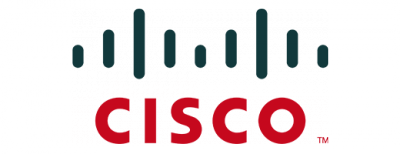
Emphasized technological partner

Gold level partners
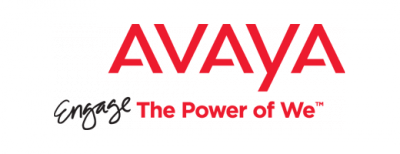
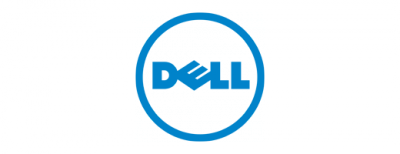
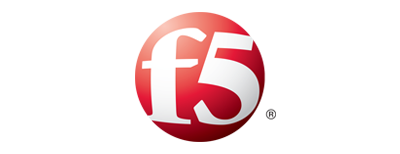



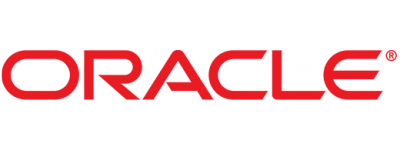
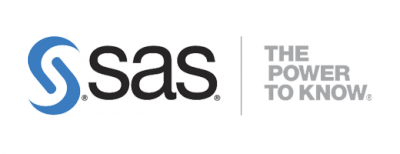
Silver level partners
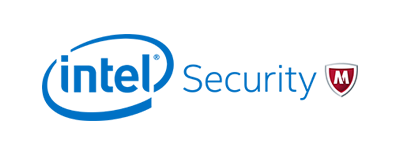
Collaborator partners
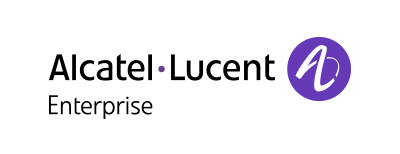
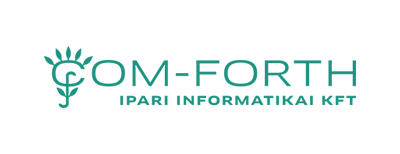
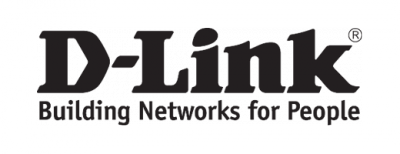


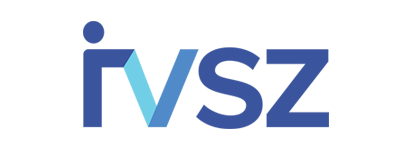
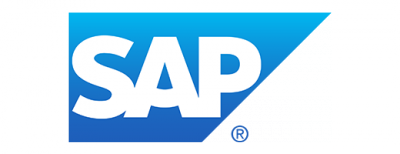
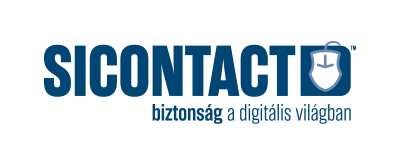
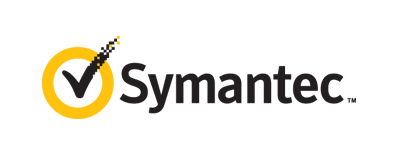
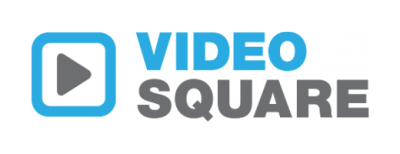
Media partners
